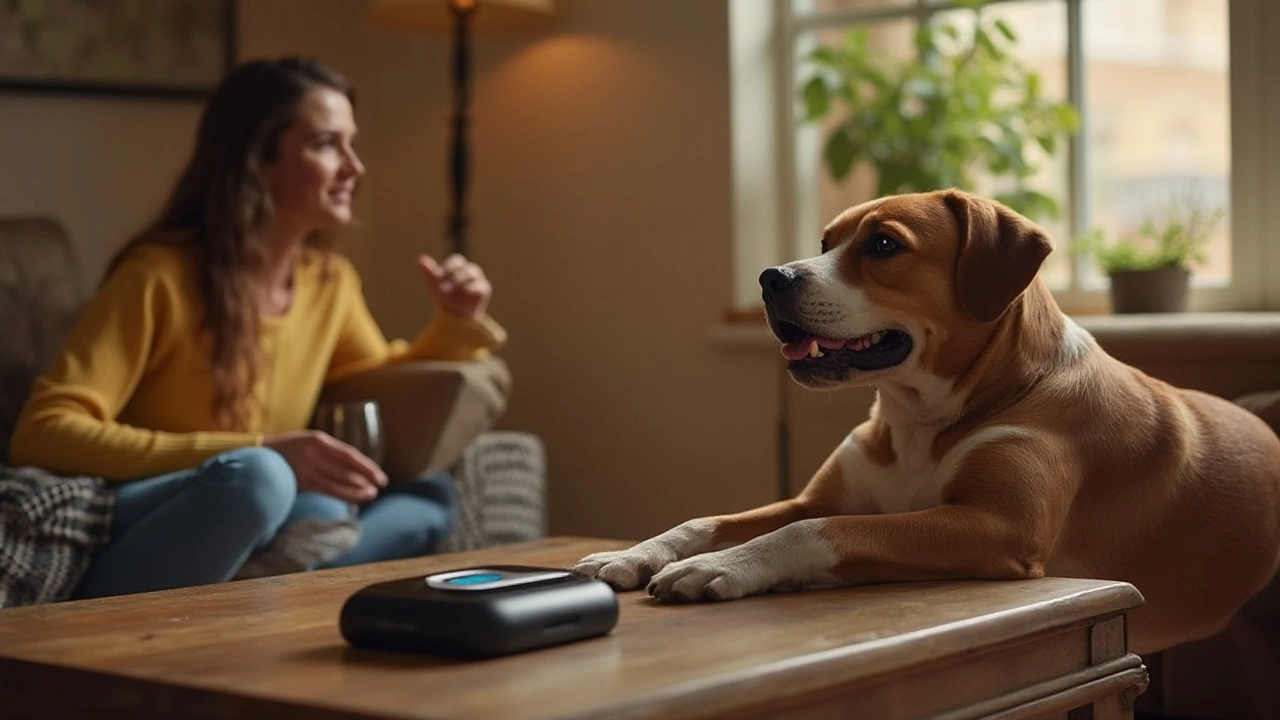Sound to Stop Barking: Simple Solutions That Really Work
Ever wish you could hit a mute button when your dog won’t stop barking? The good news is you don’t need a high‑tech gadget or a harsh collar. A carefully chosen sound can calm a noisy pup in minutes, and it’s gentle enough for even the most sensitive dogs.
Why Sound Beats Shock Every Time
Dogs hear a lot more than we do. A sudden, high‑pitched noise can startle them, but it also teaches them that barking doesn’t get a reward. Unlike shock collars, sound doesn’t cause pain, so there’s no risk of fear‑based aggression building up. It simply interrupts the barking cycle and gives you a chance to redirect the behavior.
Most importantly, sound works with the dog’s natural instincts. A calm tone or a short burst of white noise can signal, “Enough, let’s focus on something else.” When you pair that with a calm voice command, the dog learns the new rule fast.
Top Sound Tools & How to Use Them
1. Ultrasonic Bark Deterrents – These devices emit a high‑frequency tone that humans can’t hear but dogs find uncomfortable. Place one about chest height on a wall near the barking hotspot. When your dog barks, the device fires a quick burst. The key is to use it only for a few seconds, then praise the dog for being quiet.
2. White‑Noise Machines – A steady hum of static or nature sounds can mask the triggers that cause barking (like passing cars or squirrels). Keep the volume low—just enough to drown out the external noise. Over time your dog learns that the annoying sounds are gone, so the urge to bark fades.
3. Calm Music or Classical Playlists – Studies show soft classical music reduces anxiety in dogs. Create a short playlist of gentle piano or instrumental tracks and play it during high‑stress times (like when you leave for work). The music acts as a soothing background, making the dog less likely to bark out of loneliness.
4. Recorded Commands – Record your own “Quiet” command in a calm voice. Play the clip when the dog starts barking. The familiar voice tells the dog what you expect. Follow the clip with a treat or affection when the dog stops, reinforcing the quiet behavior.
5. Mobile Apps – Some smartphone apps let you emit a short, high‑pitch beep that catches a dog’s attention. Use it sparingly—just enough to interrupt a bout of barking, then immediately give a “Sit” or “Stay” cue and reward compliance.
Regardless of the tool you choose, consistency is the secret sauce. Use the sound every time the barking starts, then quickly give a clear alternative (like “Sit” or “Come”). Reward the quiet behavior within a few seconds; the dog will link the sound to the desired outcome.
Remember to keep sessions short—no more than a minute or two—so the dog doesn’t get overwhelmed. If the barking continues for a long stretch, check for underlying issues like boredom, fear, or medical pain. Sound can calm the moment, but addressing the root cause gives lasting peace.
Give one of these sound‑based methods a try today. You’ll likely notice a drop in barking within a few sessions, and your home will feel a lot quieter without any harsh equipment. Happy training!

Effective Ways to Quiet Your Dog with the Right Sound
Exploring the best ways to address the issue of constant dog barking can be vital for a peaceful household. Various sounds and tools are specifically designed to catch a dog's attention and halt their noisy habits. This guide delves into the science behind sound in dog training, exploring both natural and technological solutions. Learn how to choose the right method to help your furry friend become a quieter companion.
View more